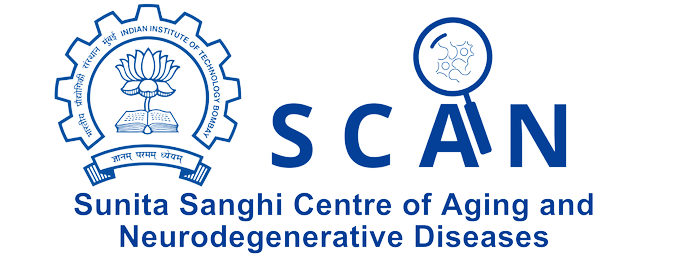
Alzheimer's disease
Alzheimer’s disease (AD) is ranked as the most prevalent type of dementia. It’s named after German psychiatrist and neuropathologist, Dr. Alois Alzheimer, who examined the first clinical case of presenile dementia. AD is a highly progressive neurodegenerative disorder that affects cognitive functions such as memory, thinking, behavior, language skills, etc. Although it usually affects people above the age of 65, early-onset AD has also been diagnosed in people under the age of 65 or less.



Pathology
AD Pathology is characterized by widespread neuronal death and abnormal extracellular deposition of amyloid plaques, composed of Amyloid beta-peptide (Aβ40/42) and/or intraneuronal inclusion of neurofibrillary tangles (NFT) which, consists of the aggregated and hyperphosphorylated form of a protein called Tau. Although the amyloid plaques and NFT can specify the progression of the disease involving neurodegeneration and neuronal dysfunction, remarkable cognitive impairment typically takes place before their appearance in the brain. However, within this context, there are many conflicting views to define the disease mechanism. For example, converging evidence suggests a lack of correlation between amyloid plaque burden and the severity of AD in patients. Also, recent reports suggest that the early-stage higher-order oligomeric intermediates formed by both Aβ and Tau proteins are more toxic to the neurons than their fibrillar forms.



Signs & Symptoms
The onset of AD generally starts long before any clinical or behavioral symptoms become apparent. But with the rise of clinical symptoms, the signs and symptoms of AD depend on the stages of disease progression in patients such as memory loss, confusion, personality changes, weight fluctuations, difficulty with the thought process, restlessness, and, eventually, loss of communication and bodily control.
Memory loss is one of the primary symptoms of AD, where the individual has difficulty remembering or recalling recent events, names, locations, and other new information. As the disease progresses, the individual might get confused about the time, place, environment and struggle to complete regular day-to-day tasks (such as brushing one’s teeth) and control their body.
Typically, AD starts slowly and worsens progressively over a period of time. AD is generally categorized into three stages: early, middle, and late.
- In the early stage (stage I), the patient’s performance might get affected due to poor judgment and decision-making abilities, increased confusion, and changes in mood/personality. Therefore, the regular task may take longer for stage I AD patients.
- In the middle stage (stage II), AD patients might encounter an increase in memory loss, confusion and difficulty in attention, and problems in recognizing family and friends. From this stage onwards, generally, full-time supervision is required as patients suffer from motor disabilities, along with difficulty with reading/writing/numbers.
- In the late stage (stage III), the patients will have significant problems in recognizing their relatives and even themselves and will lose complete self-care and communication abilities. Symptoms during this stage include loss of bladder/bowel control, difficulties with swallowing and experiencing seizures.



Risk Factors
AD is a multifactorial disease, where the prevalence of the disease increases with age, especially when an individual is 65 years or more. Epidemiological studies suggest that genetic and non-genetic factors or a combination of both may contribute to AD pathogenesis. Although most AD cases are sporadic (unknown causes), where lifestyle and environmental factors might play a role in the disease pathogenesis. However, ~ 1% of AD cases are indeed linked to genetic factors. For example; a large number of genes (>100) have been directly or indirectly associated with AD, and four of them have been convincingly linked to an increased risk of developing AD. These include APP (encodes amyloid β precursor protein), PSEN 1 (encodes PS-1), PSEN2 (encodes PS-2), and APOE. Interestingly, mutations in these genes are known to modulate APP processing (Aβ production), Aβ42/Aβ40 ratio, susceptibility of Aβ peptide for aggregation and the metabolism of Aβ, etc. Also, multiple case-control studies have suggested that increased toxic exposure to metals and dysregulation in cholesterol homeostasis increases the risk factor for AD pathology.



Diagnosis & Cure
Currently, there is no single test available for the diagnosis of AD. However, doctors generally perform methods to assess symptoms of AD by asking questions to patients or family members and performing tasks to assess cognitive abilities and memory functions. Recent advancements in brain imaging techniques can define the structure and function of the nervous system, which is useful for the diagnosis of AD. Increased loss of brain volume (accelerated brain atrophy) is one of the major pathological consequences of neuronal degeneration in AD patients. Diagnostic imaging tools, including computerized tomography (CT) and magnetic resonance imaging (MRI), are widely used to differentiate these abnormalities in the brain region of AD patients from healthy controls. In addition, MRI and CT scans are often advised to rule out other neurological disorders with overlapping symptoms. The metabolic derangement with typical regional pattern in the AD brain can be assessed by positron emission tomography (PET) scans, which also helps to detect AD and differentiate it from other types of dementia.
For example, 18F-2-deoxy-2-fluoro-D-glucose (FDG) PET imaging is successful in identifying the regional pattern of neurodegeneration with low metabolism (as severe hypometabolism of cerebral glucose is a pathological feature of AD). This may assist in diagnosing the progression of the disease. Over the past few decades, various radiotracers have been developed for PET imaging. These can detect the pathological structures associated with AD, including amyloid plaques, NFT, activated microglia, etc. Apart from imaging techniques, researchers are continuously trying to develop body-fluid [cerebrospinal fluid (CSF), blood, urine, etc.] based robust biomarkers for detecting AD. Indeed, these biomarkers based on body fluids such as blood will help to diagnose AD with more precision, even at an earlier stage.
The current medications and therapies used to treat AD are mostly targeted at improving cognitive functions. The following drugs are recommended to ease the symptoms and improve the quality of life of AD patients. Cholinesterase inhibitors and Memantine (NMDA receptor antagonists) are the two most commonly prescribed classes of drugs. A cholinesterase inhibitor is used in dementia to stabilise cognitive decline and memory-related issues in AD. It prevents acetylcholine breakdown, which then stimulates nicotinic receptors in the brain. Memantine works by controlling glutamate, a key brain chemical neurotransmitter. Commonly prescribed cholinesterase inhibitors include:
- Donepezil (Aricept) – prescribed for all stages of AD;
- Galantamine (Razadyne) – approved to treat AD (mild-to-moderate cases) and,
- Rivastigmine (Exelon) – recommended for mild-to-moderate cases
Recently, the Food and Drug Administration (FDA) in the USA approved a monoclonal antibody-based drug (aducanumab), which targets the aggregated/amyloid form of Aβ for treating AD. However, the FDA has suggested that further studies need to be conducted with this drug to make sure of its potential efficacy in patients who are being treated for AD.


